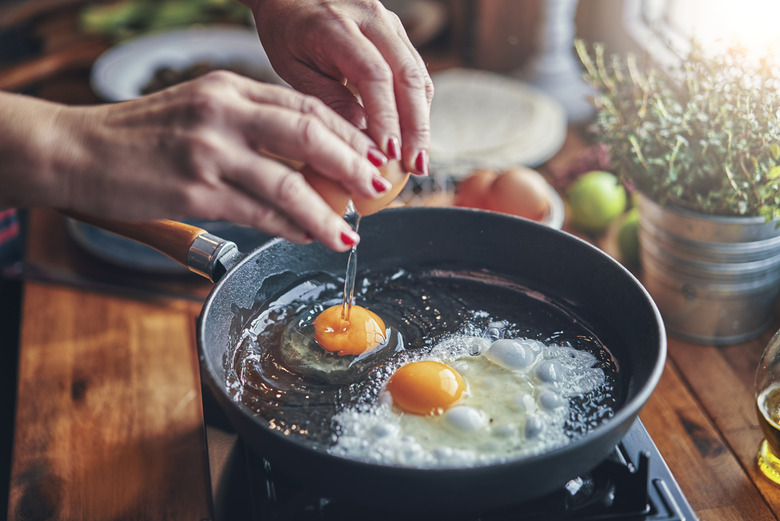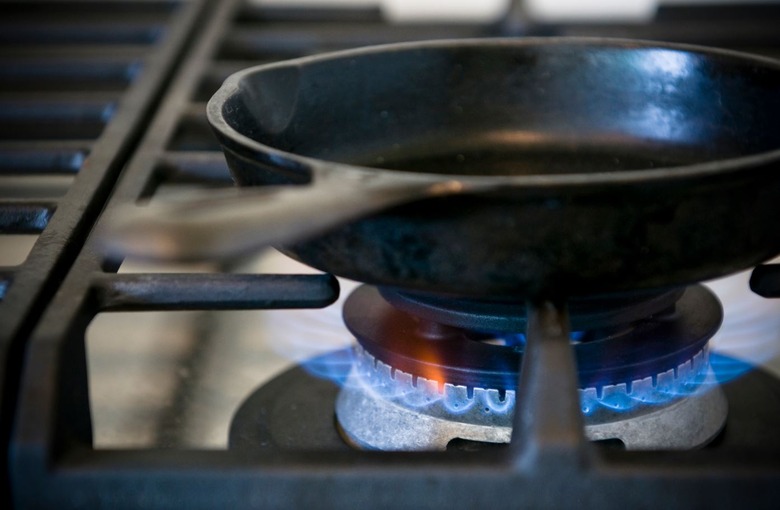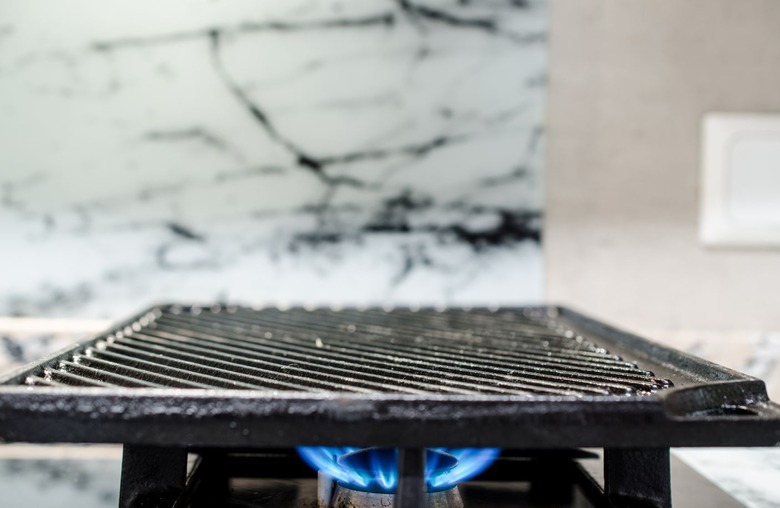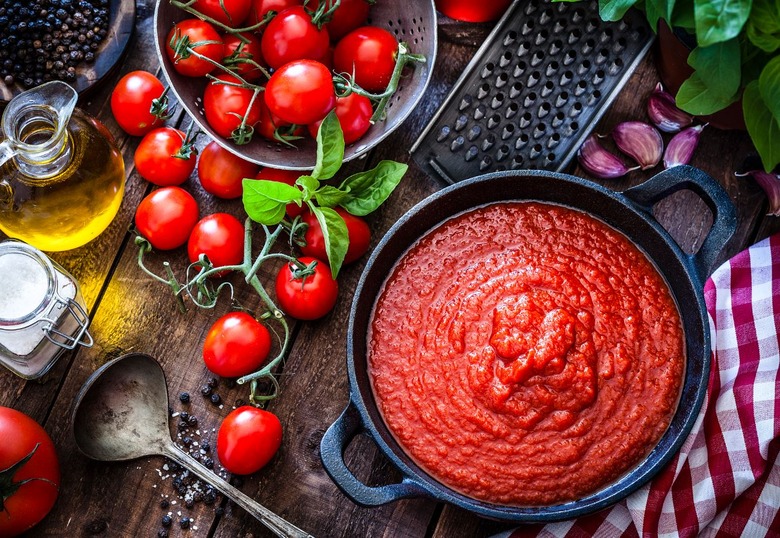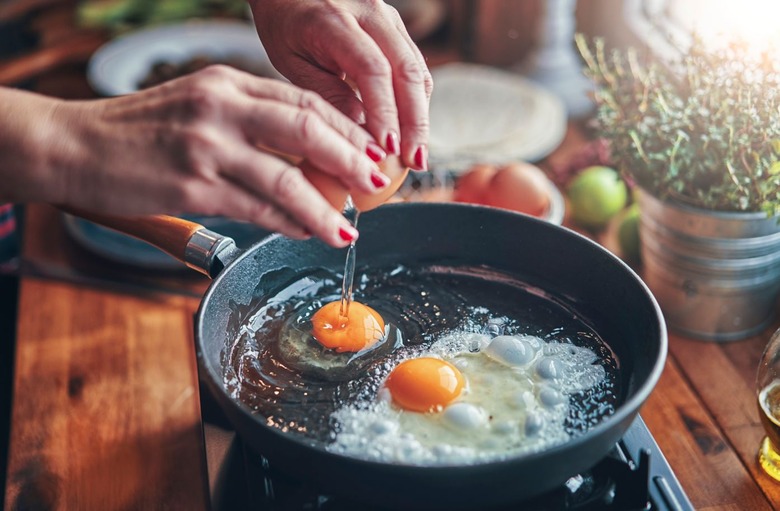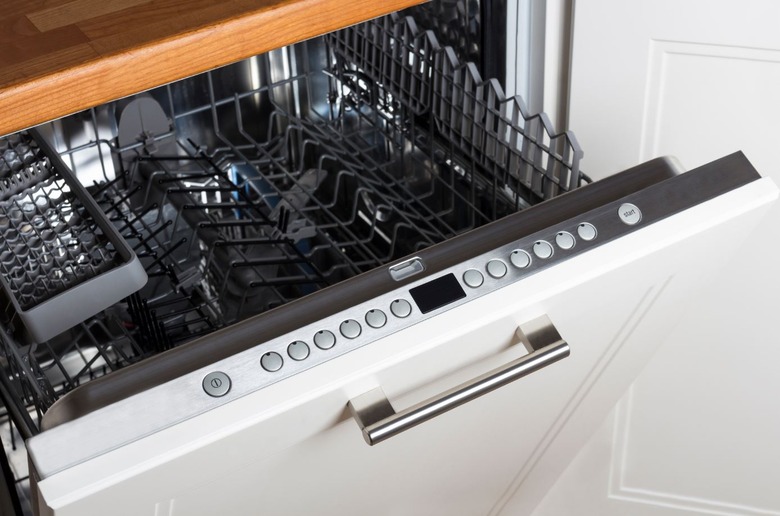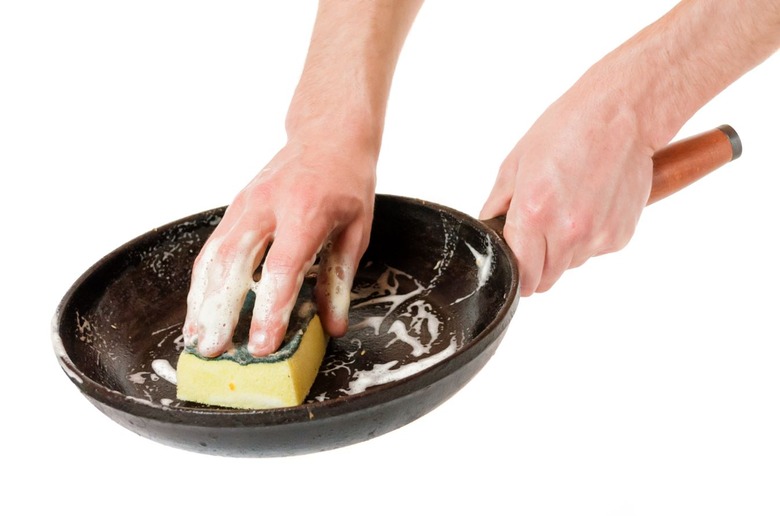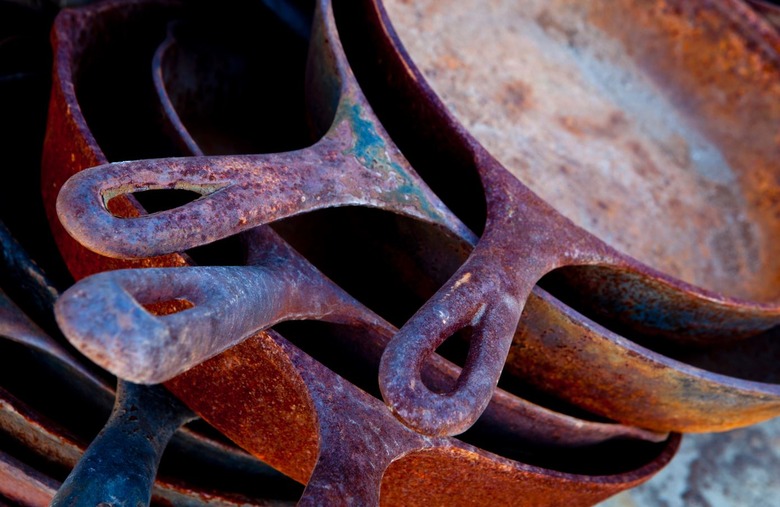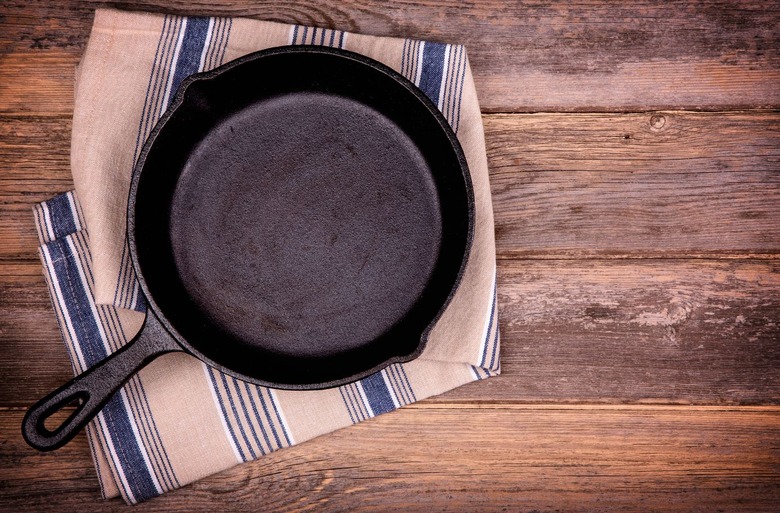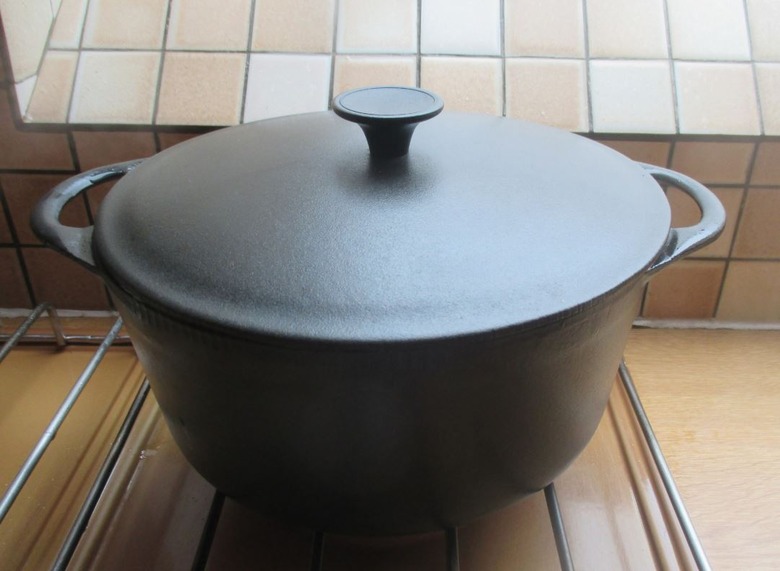Ways You're Using Your Cast Iron Pan Wrong
A cast iron pan is an essential kitchen tool, and there are plenty of reasons why it's a good investment. It's versatile, holds heat incredibly well, can go from stovetop to oven, is virtually nonstick, is inexpensive and when properly cared for it can essentially last forever.
But caring for your non-enameled cast iron pan — making sure that it stays seasoned (when a layer of polymerized oil fuses with the iron, making it nonstick) and doesn't rust, crack or warp — takes a little bit of know-how, and there are certain types of foods that cast iron isn't well-suited for. Whether you're the proud new owner of a cast iron pan or have been using one for decades, there are some cast iron mistakes you might not even realize you've been making.
By starting it off on high heat
Cast iron needs to be brought up to temperature gradually, as blasting a cold pan with high heat can lead to thermal shock. It's best to start it heating in a cold oven (like you would when you're making bacon) or on low heat on the stovetop gradually increased to high.
By putting very cold food into the pan
A cast iron pan is essential for making steak on the stove perfectly every time. Just make sure that the steak (or any food) you put into your pan isn't ice cold. If it is, it might stick.
By using a griddle over one burner
If you have a large two-burner cast iron griddle but are only cooking a couple burgers, resist the temptation to only turn on only one burner under it. Use both burners, because uneven heating can lead to a stress break or warping. Ideally, preheat your cast iron griddle in the oven before placing over burners on the stove.
By slow-cooking acidic ingredients in it
It's a commonly-held belief that wine-based sauces, tomato sauce and other acidic ingredients shouldn't be cooked in cast iron, for fear of leaching metallic flavors into the food and/or ruining the pan's seasoning. This is only partially true. The folks at the always-dependable America's Test Kitchen were only able to detect metallic flavors in tomato sauce after 30 minutes of simmering, but they caution to make sure that your pan is well-seasoned before venturing to cook anything acidic.
By cooking eggs and delicate fish filets in it
You're more than welcome to try to cook those perfect scrambled eggs and tilapia in your cast iron pan, but unless you put down a generous base coat of oil and your pan is extremely well-seasoned, don't be surprised if they stick. There are some foods that nonstick pans are just better suited-for (although you should never cook over high heat with nonstick), and these are two of them.
By putting a hot pan into cold water
Thermal shock, cracking or warping caused by rapid temperature change, is a real risk to cast iron; if you put a hot pan into cold water it could cause a grievous injury it won't come back from. Always wash a hot pan (no matter what type of pan it is) with hot water. If you value your pans, using cold water is one of the bad cooking habits you should really stop doing.
By putting it in the dishwasher
It should go without saying that putting your pan (or your knives, for that matter) in the dishwasher is a serious no-no.
By cleaning it with soap or steel wool
It's okay to use a couple drops of dish soap to wash your cast iron pan if absolutely necessary — if it's well-seasoned, this shouldn't have much effect. But scrubbing your pan with a ton of soap, using steel wool or soaking the pan will absolutely affect the seasoning, and should be avoided at all costs. Clean your pan by first wiping off residue with a paper towel. Then run the pan under hot water and give it a good scrubbing with a brush, non-abrasive scrub pad or a steel chain-mail cloth. Just remember to remove as much oil as you can from the pan before rinsing.
By not drying it immediately after cleaning
Letting your pan sit out while wet can lead to rusting, one of cast iron's mortal enemies. Dry it as quickly as possible after cleaning. The drying rack can be one of the dirtiest places in your kitchen, anyway.
By not giving it a light coating of oil while it’s warm
In order to maintain a healthy, shiny coat of seasoning, you'll want to reinforce it as often as possible. Lightly re-season it after each use by heating up the clean pan over medium-low heat and wiping a very small amount of vegetable oil (not an oil with any flavor, like olive oil) around the inside of the pan with a paper towel, before letting it cool completely.
By storing it with the lid on
If your pan has a lid, make sure you store it with the lid removed; any small amount of moisture trapped inside can cause rusting and lead to bacteria buildup.
By not storing it in a cool, dry place
We assume that you're not storing your cast iron pan next to the shower (which would also be gross), but you get the idea. Try to keep it in as dry an environment as possible to keep it from rusting.
By not re-seasoning when necessary
Cast iron pans can last forever with proper maintenance and use, so don't despair if your pan rusts or loses its seasoning. If your pan gets rusty, you should be able to just scrape it off and re-season it. After thoroughly washing it with soap and water, rub a tablespoon of oil all over the pan and be sure to wipe away any excess before baking it upside-down in a 500-degree oven for an hour.
By not having fun with it
If you're only using your cast iron pan to cook steaks and bacon, you're totally missing out. From pizzas to brownies to the best macaroni and cheese of your life, there are lots of foods we bet you had no idea you could make in your cast iron pan.
More from The Daily Meal:
16 Cooking Hacks We Learned From Our Parents
15 Foods You've Been Cooking Wrong This Entire Time
21 Recipes That Will Have You Cooking Like a True Midwesterner
